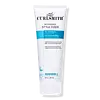What's inside
What's inside
 Key Ingredients
Key Ingredients

 Benefits
Benefits

 Concerns
Concerns

 Ingredients Side-by-side
Ingredients Side-by-side

Water
Skin ConditioningPolyquaternium-69
Glycerin
HumectantPEG-40 Hydrogenated Castor Oil
EmulsifyingSelaginella Lepidophylla Extract
EmollientPersea Gratissima Oil
Skin ConditioningPrunus Armeniaca Kernel Oil
MaskingAloe Barbadensis Leaf Juice
Skin ConditioningOcimum Basilicum Leaf Extract
Skin ConditioningRosmarinus Officinalis Leaf Extract
AntimicrobialSalvia Officinalis Leaf Extract
CleansingPiper Nigrum Seed Extract
RefreshingHelianthus Annuus Seed Oil
EmollientCarapa Guaianensis Seed Oil
Skin ConditioningSodium Gluconate
Skin ConditioningCarbomer
Emulsion StabilisingButylene Glycol
HumectantAminomethyl Propanol
BufferingTocopherol
AntioxidantEthylhexylglycerin
Skin ConditioningSodium Benzoate
MaskingPotassium Sorbate
PreservativePhenoxyethanol
PreservativeIodopropynyl Butylcarbamate
PreservativeParfum
MaskingCitrus Limon Peel Oil
MaskingLimonene
PerfumingLinalool
PerfumingPinene
MaskingTetramethyl Acetyloctahydronaphthalenes
MaskingWater, Polyquaternium-69, Glycerin, PEG-40 Hydrogenated Castor Oil, Selaginella Lepidophylla Extract, Persea Gratissima Oil, Prunus Armeniaca Kernel Oil, Aloe Barbadensis Leaf Juice, Ocimum Basilicum Leaf Extract, Rosmarinus Officinalis Leaf Extract, Salvia Officinalis Leaf Extract, Piper Nigrum Seed Extract, Helianthus Annuus Seed Oil, Carapa Guaianensis Seed Oil, Sodium Gluconate, Carbomer, Butylene Glycol, Aminomethyl Propanol, Tocopherol, Ethylhexylglycerin, Sodium Benzoate, Potassium Sorbate, Phenoxyethanol, Iodopropynyl Butylcarbamate, Parfum, Citrus Limon Peel Oil, Limonene, Linalool, Pinene, Tetramethyl Acetyloctahydronaphthalenes
Water
Skin ConditioningAloe Barbadensis Sprout
HumectantHydroxyethylcellulose
Emulsion StabilisingMaltodextrin/Vp Copolymer
Potassium Hydroxide
BufferingGluconolactone
Skin ConditioningSodium Benzoate
MaskingCalcium Gluconate
HumectantAcrylates/C10-30 Alkyl Acrylate Crosspolymer
Emulsion StabilisingCitrus Aurantium Dulcis Peel Oil
MaskingCaprylic/Capric Triglyceride
MaskingPotassium Sorbate
PreservativeSodium Phytate
Glycerin
HumectantChamomilla Recutita Flower Extract
MaskingEucalyptus Globulus Leaf Extract
PerfumingGinkgo Biloba Leaf Extract
Skin ConditioningAspalathus Linearis Leaf Extract
Skin ConditioningHoney Extract
HumectantLimonene
PerfumingWater, Aloe Barbadensis Sprout, Hydroxyethylcellulose, Maltodextrin/Vp Copolymer, Potassium Hydroxide, Gluconolactone, Sodium Benzoate, Calcium Gluconate, Acrylates/C10-30 Alkyl Acrylate Crosspolymer, Citrus Aurantium Dulcis Peel Oil, Caprylic/Capric Triglyceride, Potassium Sorbate, Sodium Phytate, Glycerin, Chamomilla Recutita Flower Extract, Eucalyptus Globulus Leaf Extract, Ginkgo Biloba Leaf Extract, Aspalathus Linearis Leaf Extract, Honey Extract, Limonene
Ingredients Explained
These ingredients are found in both products.
Ingredients higher up in an ingredient list are typically present in a larger amount.
Glycerin is already naturally found in your skin. It helps moisturize and protect your skin.
A study from 2016 found glycerin to be more effective as a humectant than AHAs and hyaluronic acid.
As a humectant, it helps the skin stay hydrated by pulling moisture to your skin. The low molecular weight of glycerin allows it to pull moisture into the deeper layers of your skin.
Hydrated skin improves your skin barrier; Your skin barrier helps protect against irritants and bacteria.
Glycerin has also been found to have antimicrobial and antiviral properties. Due to these properties, glycerin is often used in wound and burn treatments.
In cosmetics, glycerin is usually derived from plants such as soybean or palm. However, it can also be sourced from animals, such as tallow or animal fat.
This ingredient is organic, colorless, odorless, and non-toxic.
Glycerin is the name for this ingredient in American English. British English uses Glycerol/Glycerine.
Learn more about GlycerinLimonene is a fragrance that adds scent and taste to a formulation.
It's found in the peel oil of citrus fruits and other plants such as lavender and eucalyptus. The scent of limonene is generally described as "sweet citrus".
Limonene acts as an antioxidant, meaning it helps neutralize free radicals.
When exposed to air, oxidized limonene may sensitize the skin. Because of this, limonene is often avoided by people with sensitive skin.
The term 'fragrance' is not regulated in many countries. In many cases, it is up to the brand to define this term. For instance, many brands choose to label themselves as "fragrance-free" because they are not using synthetic fragrances. However, their products may still contain ingredients such as essential oils that are considered a fragrance.
Learn more about LimonenePotassium Sorbate is a preservative used to prevent yeast and mold in products. It is commonly found in both cosmetic and food products.
This ingredient comes from potassium salt derived from sorbic acid. Sorbic acid is a natural antibiotic and effective against fungus.
Both potassium sorbate and sorbic acid can be found in baked goods, cheeses, dried meats, dried fruit, ice cream, pickles, wine, yogurt, and more.
You'll often find this ingredient used with other preservatives.
Learn more about Potassium SorbateSodium Benzoate is a preservative. It's used in both cosmetic and food products to inhibit the growth of mold and bacteria. It is typically produced synthetically.
Both the US FDA and EU Health Committee have approved the use of sodium benzoate. In the US, levels of 0.1% (of the total product) are allowed.
Sodium benzoate works as a preservative by inhibiting the growth of bacteria inside of cells. It prevents the cell from fermenting a type of sugar using an enzyme called phosphofructokinase.
It is the salt of benzoic acid. Foods containing sodium benzoate include soda, salad dressings, condiments, fruit juices, wines, and snack foods.
Studies for using ascorbic acid and sodium benzoate in cosmetics are lacking, especially in skincare routines with multiple steps.
We always recommend speaking with a professional, such as a dermatologist, if you have any concerns.
Learn more about Sodium BenzoateWater. It's the most common cosmetic ingredient of all. You'll usually see it at the top of ingredient lists, meaning that it makes up the largest part of the product.
So why is it so popular? Water most often acts as a solvent - this means that it helps dissolve other ingredients into the formulation.
You'll also recognize water as that liquid we all need to stay alive. If you see this, drink a glass of water. Stay hydrated!
Learn more about Water